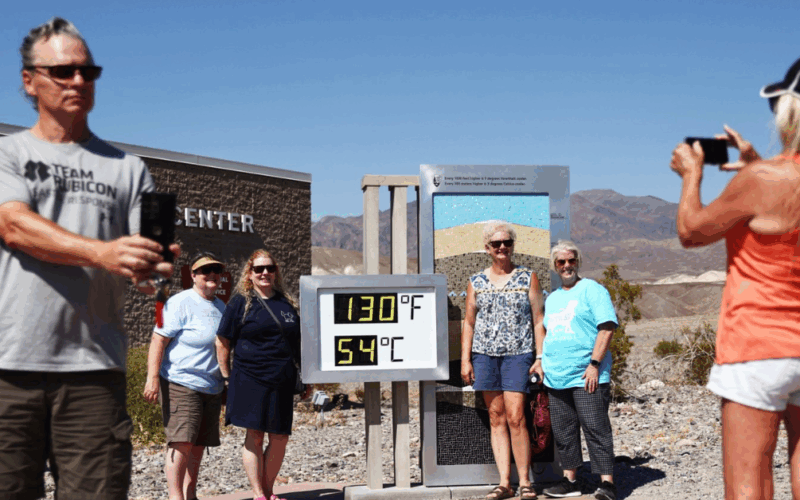California is currently experiencing an intense heat wave, with large areas of the state placed under an Extreme Heat Warning. This wave of heat is not only making life uncomfortable but is also increasing the threat of wildfires in the region. Temperatures are soaring, breaking records and putting millions of residents at risk of heat-related illnesses.
The situation has prompted authorities to urge caution as dry conditions and extreme heat combine to create a dangerous environment for fires to ignite and spread quickly. Understanding the risks and taking preventive measures is crucial for safety during this challenging time.
What is Causing the Extreme Heat in California?
The current extreme heat in California is largely due to a strong high-pressure system sitting over the western United States. This system traps hot air in the region, preventing cooler air from moving in and causing temperatures to rise significantly. According to the National Weather Service, many parts of California are experiencing temperatures well above the seasonal average, with some areas reaching into the mid to high 100s Fahrenheit.
These conditions are particularly risky because California’s dry summer environment means there is little moisture to cool things down. The lack of rainfall and high temperatures dry out vegetation, creating very dry fuel for potential wildfires. For continuous updates, the National Weather Service provides detailed forecasts and warnings.
Extreme Heat Warning: What Does It Mean for Residents?
When an Extreme Heat Warning is issued, it means that the heat conditions are expected to be dangerously high and may pose health risks. People are advised to stay cool, stay hydrated, and avoid outdoor activities during the hottest parts of the day. Those with health conditions, older adults, and children should take extra precautions as they are more vulnerable to heat-related illnesses such as heat exhaustion or heat stroke.
Local authorities often open cooling centers in areas without adequate air conditioning. The Centers for Disease Control and Prevention (CDC) also offers guidelines on how to protect yourself and family from extreme heat.
Increasing Fire Risk: Why the Heatwave is Dangerous
The prolonged heat wave combined with very dry vegetation significantly increases the risk of wildfires. Hot, dry weather is the perfect recipe for fires to start and spread quickly. California already has a history of devastating wildfires, which have destroyed homes and affected thousands of people in recent years.
Fire prevention efforts are heightened during such warnings. Residents are reminded not to discard cigarettes carelessly, avoid using fireworks, and follow any local fire restrictions. The California Department of Forestry and Fire Protection (CAL FIRE) provides real-time updates on fire outbreaks and safety measures.
How to Stay Safe During the Heat Wave and Fire Risk Period
To stay safe during this extreme heat and high fire risk period, residents should follow these essential tips:
- Drink plenty of water throughout the day to avoid dehydration.
- Wear light, loose-fitting clothing and use sunscreen when outdoors.
- Limit outdoor activities, especially during peak heat hours (usually midday to late afternoon).
- Stay informed by following weather updates and fire alerts from official sources.
- Keep windows and doors closed during the hottest part of the day and use fans or air conditioning if available.
- Have a fire evacuation plan ready and know the local emergency contacts.
Preparing for emergencies and following guidelines can help reduce the risks associated with extreme heat and fires.
Looking Ahead: What Does This Heatwave Mean for California’s Future?
Experts warn that California’s heatwaves could become more frequent and intense because of climate change. Rising global temperatures contribute to longer dry seasons and more severe heat events. This trend puts additional pressure on the state’s water resources, public health systems, and emergency response capabilities.
Efforts to improve wildfire prevention, enhance infrastructure, and raise public awareness are critical for managing these challenges. Understanding the current situation is a step toward being better prepared for the future.




